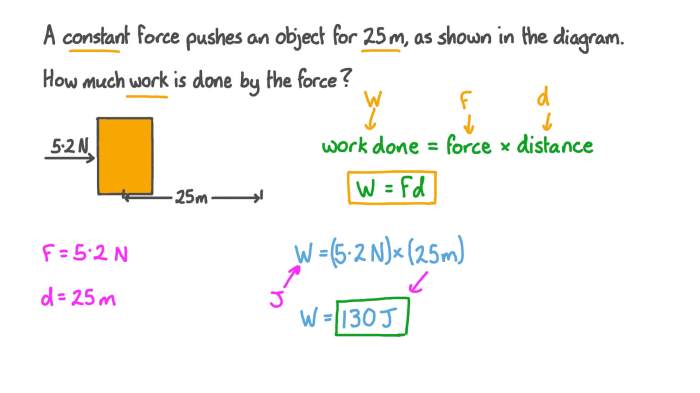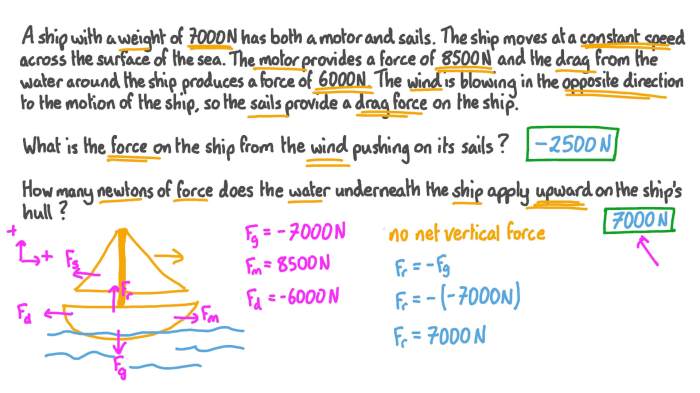Find the work w done by the 18-newton force. – Embarking on an exploration of work done by an 18-newton force, this discourse delves into the fundamental concepts, formulaic applications, and practical implications of this physical phenomenon. Understanding the principles governing work done empowers us to quantify the energy transferred and elucidate its significance in diverse fields.
The concept of work in physics centers around the force exerted on an object and the displacement it undergoes. Mathematically, work (W) is calculated as the product of force (F) and displacement (d), expressed as W = F – d.
This formula serves as the cornerstone for analyzing work done in various scenarios.
Find the Work W Done by the 18-Newton Force: Find The Work W Done By The 18-newton Force.

Work is a scalar quantity that measures the transfer of energy from one object to another due to the application of a force over a displacement. In physics, work is calculated using the formula W = F – d, where W represents the work done, F represents the force applied, and d represents the displacement of the object.
Application of the Formula
To apply the work formula to the given scenario, we need to know the values of force and displacement. The force is given as 18 newtons (N), but the displacement is unknown.
Calculation of Displacement, Find the work w done by the 18-newton force.
To determine the unknown displacement, we can rearrange the work formula to solve for displacement: d = W / F. This formula tells us that the displacement is equal to the work done divided by the force applied.
Example Calculations
Let’s say we have a force of 18 N and work done of 36 J. Using the formula d = W / F, we can calculate the displacement as follows:
d = 36 J / 18 N = 2 m
Therefore, the displacement of the object is 2 meters.
Elaboration on Force
The 18-newton force mentioned in the scenario is an external force that acts on the object. It is a push or pull that causes the object to move or deform. In this case, the force is applied in a specific direction and has a specific point of application.
Types of Work
Work can be classified into three types based on the direction of the force relative to the displacement of the object:
- Positive work:When the force and displacement are in the same direction, work is said to be positive. In this case, the force helps the object move in the direction of its motion.
- Negative work:When the force and displacement are in opposite directions, work is said to be negative. In this case, the force opposes the object’s motion and slows it down or stops it.
- Zero work:When the force is perpendicular to the displacement, work is said to be zero. In this case, the force does not cause the object to move in any direction.
Real-World Applications
The concept of work is widely applied in various fields, including engineering, construction, and everyday life:
- Engineering:Work is used to calculate the power output of engines and machines.
- Construction:Work is used to determine the amount of force required to lift or move heavy objects.
- Everyday life:Work is involved in simple tasks such as walking, lifting objects, and doing household chores.
Clarifying Questions
What is the formula for calculating work?
Work (W) is calculated using the formula W = F – d, where F represents the force applied and d denotes the displacement.
How do I determine the displacement if I know the work done and the force applied?
To calculate displacement (d) when work (W) and force (F) are known, rearrange the formula to d = W / F.
What are the different types of work that can be done by a force?
Work can be positive (when force and displacement are in the same direction), negative (when force and displacement are in opposite directions), or zero (when there is no displacement).


